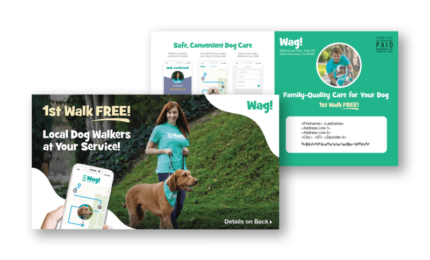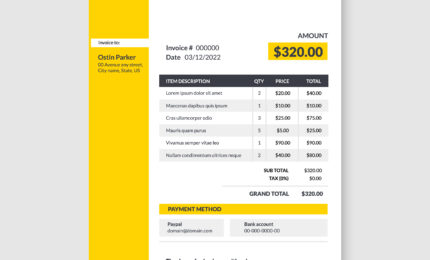7 Direct Mail Fundraising Strategies for Non-Profits
By Paul Bobnak | July 21, 2021

Despite the attention given to digital channels, direct mail fundraising is still the most effective way for non-profits to build support from the general public.
According to statistics from NonProfit Source:
- “Direct mail motivated 36% more donors to give online in 2016 compared to previous year”
- “Direct mail with digital ads yields a 28% higher conversion rate”
In 2020, only 12.9% of fundraising came from online donations. This finding comes from the most recent Blackbaud Institute Charitable Giving Report.
So why is direct mail fundraising so powerful? 3 reasons:
- Audience – Direct mail donors tend to be older and in prime giving years – think Baby Boomers and the Silent Generation and even Generation X. They’ve known mail as the giving channel for decades.
At the same time, millennials and Generation Z are known to be big fans of direct mail. When done cleverly or with an appeal to their mindsets, the right mail piece can motivate a donation. - Print – Research shows that haptics – the touch and feel of paper – gives donors a deeper understanding of, and engagement with, printed materials, such as ads. A Temple University study found that paper ads engaged viewers longer than digital ads did. When reviewed a week later, test subjects showed a greater emotional response and memory for physical ads.
- Emotions – To drive action, consider how to tap the emotional pain (or pleasure) points of your target audience. Use facts to support those feelings.
7 Strategies for Non-Profit Direct Mail Fundraising
A non-profit direct mail strategy should play to the strengths and possibilities of this channel. Direct mail may appear to be just ink on paper, but what you do with that ink and paper can make or break your campaign.
1. Identify Specific Target Audiences for Direct Mail
We’ve already talked about how important it is to focus on your audience. While you may have a broad mission with a wide appeal, that doesn’t mean you should send mass mailings either.
Your direct mail fundraising campaign should only be going to specific groups who have something in common. They’re more likely to give based on how you write and structure your direct mail piece.
Examples of segments that can be targeted:
- Geographic – if your Non-Profit provides services within a specific region
- Demographic – if you want to make appeals based on gender, age group, etc.
- Behavioral – if you know who your best donors are by amount given or years as a contributor
- Psychographic – if you have enough data to break down or match potential supporters by shared values and interests
2. Use Donor Data to Create a Customized Experience
Data is the king of direct mail. Besides guiding your selection of an audience segment, it helps you decide what strategy to follow, depending on your budget and goals.
Personalization lets you treat each donor as an individual based on what you know about them – their demographics, giving history, and more. Variable Data Printing (VDP) uses that data to improve both the response rate and donation amounts by using customized copy and images.
3. Keep Multichannel in Mind
Modern fundraising means multichannel, not just direct mail, email, or the web by themselves. The more channels that donors are exposed to, the more likely they are to trust your message, and then, to donate.
Some tactics to roll out:
- QR codes – Get supporters to your website or landing page in seconds with a quick scan of a QR code on your donation form or letter
- Email – Maximize the individual and combined strengths of email and direct mail to reach expired members, upgrade current donors, or retarget website visitors
- Social – Direct contributors or members to your social media channels to foster community – which builds loyalty and results in more money raised
4. Create Storytelling Content for Direct Mail Letters
Your direct mail fundraising campaign is a conversation between you and the donor. And like many conversations, it is about telling stories (and listening to them). Although the recipient has probably never met the sender before, they can develop an emotional connection if they are made to care about a challenge, choice, triumph, or achievement.
With a story, you can help answer 2 main questions the recipient is asking:
“Do I care about this? What can I do about it?”
That second question is crucial. As much as you want to talk about the greatness of your non-profit, let your website do that job. Instead, make it clear that the donor – not you – is the hero who can save the day.
5. Concise, Skimmable Copy
To keep your audience visually engaged, avoid long blocks of copy or headlines in small type. To make your direct mail easy on their eyes:
- Use short sentences and paragraphs.
- And short, punchy words.
- And bold type.
Notice the difference? And the impact?
6. Consistent Branding
When you add mail to your marketing mix, it helps to create a unified brand experience for prospective donors and supporters. The same message, logos, colors, and other elements that appear on all of your channels builds your credibility with your audience. Consistency makes them feel safer in joining or giving to your organization.
Direct mail, because it is a print medium, gives you an opportunity to stand apart from other non-profits. A flyer, calendar, or even a colorful envelope lets you show a side of your organization or mission in a way that a website can’t.
7. Strong Hook and CTA
To help create a successful direct mail fundraising appeal, you need to use the right words and images. When you use the traditional AIDA (Attention-Interest-Desire-Action) model, you move donors to follow stages, leading to them deciding to open their wallets.
Here’s a bare-bones rundown of some ideas to accomplish this:
- Attention – A headline teaser – and often an image or organization logo – stops them in their tracks. Instead of tossing the envelope, they take a moment to think about what could be inside.
- Interest – Your initial hook should be followed by copy that tells a story (see above), or establishes a need with enough details that the contributor keeps reading, thinking, and most importantly – feeling.
- Desire – With a background established, a supporter should begin to wonder: “What can I do to help?” and “What’s in it for me?” This is when you start to talk about how they can help.
- Action – Tell your donor what you want them to do next, and when – attending an event, going to a website, returning a form, scanning a QR code, etc. And make sure that your call-to-action is unmissable by using white space, a larger font, or other tactics.
Wrapping it up
Together with these non-profit direct mail best practices, you’ll be on your way to creating an effective fundraiser and building a sustainable base for your organization.
At mailing.com, we work with many non-profits, such as Feed the Children and Union Rescue Mission. We help bring their direct mail campaigns to life, from design and data management to printing and mailing. Reach out to our team to talk about how we can work together on your fundraising campaign!


